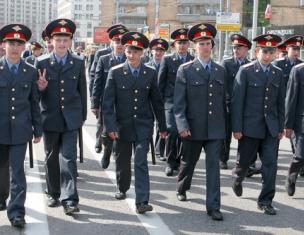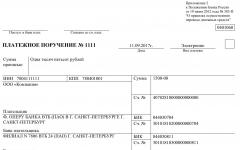The Russian Focus II was equipped with gasoline engines of 1.4 liters (80 hp), 1.6 liters (100 and 115 hp), 1.8 liters (125 hp) and 2.0 liters (145 hp). Dealers also sold versions with a 1.8-liter turbodiesel with a capacity of 115 horsepower. As standard, the 1.4-liter, 1.6-liter and 1.8-liter engines were combined with a five-speed manual transmission of the IB5 series, and with the 2.0-liter - the same “five-speed”, but with the MTX75 index, capable of “digesting” a larger torque. For all gasoline engines, except the 1.4-liter, a four-speed automatic transmission was offered.
In 2008, Ford introduced the updated Focus, which many even called the third “Focus” - the car was so radically transformed. But it was a classic restyling. The car now has new fenders, a hood, bumpers, headlights, exterior mirrors, and sidewalls - without moldings, but with more dynamic stiffeners. And the most noticeable innovation is the radiator grille in the form of a huge inverted trapezoid. For all versions except the sedan, LED rear lights began to be offered as an option. Another luxury Titanium package has appeared. In the cabin, the climate control unit and instrument panel have been updated. The finishing materials have become even better. But in technically Focus hasn't changed. It is the restyled versions that are preferable for purchase - most of the congenital diseases in such “Focuses” had already been cured by this time.
Modifications of Ford Focus II
Body
As a rule, the inspection of the specimen you like begins with the body. We still greet people based on their clothes. And if Focus didn't inspire you with its appearance, do not rush to refuse. Faded paint, sandblasted sills at the bottom and darkened decorative details on cars with high mileage are, rather, signs of natural aging rather than barbaric use. Particular attention is paid to the chrome trim on the trunk lid: corrosion at the point of contact with the body appears after two or three Russian winters. It costs about 5,000 rubles. At the same time, check the license plate illumination - its wiring succumbs to corrosion quite quickly. Moreover, hatchbacks and sedans suffer from this to a greater extent. Repair - 1500 rub.
In winter, the touch buttons of the trunk lock often freeze due to moisture. In addition, the Focus has had a signature problem since the first generation - a souring hood opening lock. In order for it to open easily, you need to lubricate the inner surface of the emblem covering the lock cylinder. Better yet, replace the standard plastic lock (RUB 3,000) with a metal one from Mondeo. Often fails central locking, due to which not only the doors are blocked, but also the gas tank flap. Therefore, an attempt to refuel with a failed central locking may turn out to be unsuccessful.
Salon
The interior of the "Focuses" is assembled carefully and conscientiously. Even with age, squeaks and crickets do not bother him. And fabric upholstery is easy to dry clean and is wear-resistant. True, it happens that interior equipment and electrics are moping. There have been complaints about the failure of seat heating. Moreover, for the original “hot water bottle” you will have to pay about 10,000 rubles. There are known cases of climate control vagaries due to the failure of the cabin temperature sensor (RUB 2,500). Therefore, checking the performance of the air conditioner before purchasing a used Focus is advisable. Also drive the "stove" on various modes fan - the “whistle” of the motor will indicate its imminent death. The new electric motor will empty your pocket by 7,500 rubles. True, a burnt resistor (900 rubles) can often be the culprit for the sudden “death” of a fan. Low beam and headlight bulbs often burn out, and to replace them you have to remove the headlight unit. And in winter you need to be prepared to replace failed elements of the side mirrors. The new amalgam is estimated at 2000 rubles.
Engine
Mechanics praise the basic 1.4-liter engine - it has virtually no congenital problems. The main thing is not to forget on time, every 80 thousand km, to update the timing belt. True, due to its modest volume and power, it is usually “twisted” to the fullest and it works for wear, falling into second hands already at the limit of its resource.
The 1.6-liter engine (100 hp), which was installed on the first Focus, rightfully bears the title of the most widespread and reliable. It accounts for more than a third of all “Focuses” presented on the market today. The South African-assembled motor is intended for use in third world countries. Its simple design determines excellent maintainability and low cost of operation. But many consider this unit to be rather weak for a modern car. Especially paired with an automatic transmission.
Another thing is its 115-horsepower brother, equipped with a variable valve timing system on the intake and exhaust shafts. The engine's thrust is already quite sufficient in all modes, and it gets along much better with an automatic transmission, and in terms of efficiency it is not inferior to the 100-horsepower version. Only this modern motor quickly “runs out” of the phase reflex coupling (RUB 11,500). True, on modernized machines the unit has become more durable.
Modifications with “fours” with a volume of 1.8 and 2.0 liters are second only to versions with a 1.6 liter engine (100 hp). Both engines are identical in design and suffer from common ailments. The service life of the engines is 350 thousand km. And the timing drive has a long-lasting chain, which is usually replaced after 200 thousand km. But in order for the engines to live safely into old age, after the first “hundred” you should pay attention to the valve cover gasket (RUB 1,000), which begins to poison the oil. However, at first you can limit yourself to tightening the bolts that are weakening due to vibrations. And then only replacement. By this time, as a rule, the upper hydraulic engine mount wears out (RUB 3,500).
The unreasonable blues of the 1.8-liter engine (it appears less often on the 2.0-liter) - poor traction and cold starting, choppy idle speeds and increased consumption fuel - was associated with unfinished software electronic unit engine control. Therefore, dealers changed its firmware depending on the malfunction, although they were extremely reluctant to take these measures. Ignition coils and high voltage wires, fuel pumps. The throttle body and the exhaust gas recirculation valve become dirty quite quickly. Neutralizers (34,000 rubles) do not differ in mileage either, the life expectancy of which depends on engine oil consumption. If the engine's appetite increases to 200 grams per 1000 km, you need to sound the alarm and contact service. Otherwise, expensive repairs are guaranteed.
It is advisable to change the oil in a 1.8 liter turbodiesel every 5–10 thousand km, and refuel only at proven network gas stations. And then the fuel pump high pressure(fuel injection pump) will overcome the 200 thousand km mark. Repair - from RUB 30,000. You will have to spend money on new injection nozzles (RUB 12,500 each) and flush the exhaust gas recirculation valve. After 100 thousand km, the dual-mass flywheel wears out. A similar problem, by the way, occurs on the 2.0-liter gasoline engine. If you feel jerking when starting off and a characteristic rattling sound, change it immediately. The part is expensive - from 25,000 rubles, but the consequences of the destruction caused by the flywheel will be even more noticeable.
Transmission
On a manual IB5 gearbox, after 50–80 thousand km, “departures” of the second gear are known due to weak synchronizers. And when working with an increased load, the pinion axis in the differential may burst, which threatens a hole in the crankcase and repairs costing 100,000 rubles. If during a test drive the box “howls like a beast,” it means the input shaft bearing is worn out. And it urgently needs to be changed. Otherwise, the consequences can be depressing.
But the “mechanics” of the MTX75 are more durable. True, over time, oil seals and gear shift rod seals leak, and due to the low level of transmission oil, the shafts and gear rims quickly wear out. The clutch can last 100 thousand km or more, if not for a weak release bearing, made in a single block with the clutch slave cylinder, which wears out after 50 thousand km.
But the “automatic” is as simple as five kopecks and reliable as a tank. Box 4F27E was placed on various models Ford back in the late 1980s, so today it is almost completely devoid of childhood diseases. After 150 thousand km, you will only need to repair the valve body (RUB 22,000) and replace the pressure regulator solenoids.
Suspension
With the driving properties of the Focus II, everything is in perfect order thanks to the exquisitely tuned independent suspension. Its main elements are long-lived. The idyll is broken by the support bearings of the struts, “nursing” on average 40–70 thousand km. Approximately the same amount was allocated to the wheel bearings, which are replaced as an assembly with the hubs. When replacing, do not forget about the ABS sensors - they are often damaged during dismantling. Light knocks in the suspension after 40,000 km will make themselves felt by the stabilizer struts. But the bushings last almost twice as long. At the same time, at 80–110 thousand km, the turn will come to update the ball joints assembled with a lever and silent blocks. And then shock absorbers are on the way (4,200 rubles each).
In the rear suspension, the stabilizer struts are updated every 60–80 thousand km. The bushings last on average one and a half times longer. By “hundred” the lower control arms wear out. Shock absorbers (3,800 rubles each) have a slightly longer lifespan - they often reach 110–140 thousand km.
In the steering system, the rod ends are enough for 50–80 thousand km. And the rack itself on the first cars was even changed under warranty, but by 2008 it became more durable. Moreover, versions with 1.4 and 1.6 liter engines were equipped with a traditional hydraulic booster, and more powerful modifications came with an electro-hydraulic power steering, which can “burn out” the pump control board. Usually you have to change the entire assembly for 28,000 rubles.
Bottom line
Finding a technically serviceable Ford Focus II will not be difficult. If you are not satisfied with modifications with reliable 1.4 and 1.6 liter engines (100 hp), you can find a Focus from Europe with an equally reliable 2.0 liter turbodiesel. True, we have few such versions. And it’s better to opt for post-restyling cars - they have already suffered from childhood diseases.
Ford Focus II (2004–2011): case history
The second generation Ford Focus became a bestseller even before its official sales began. All promotion work on Russian market it was made for him by his predecessor, who was extremely in demand by our compatriots. And the appearance of the Ford Focus II marked a new, higher quality product - the car was distinguished by high-quality finishing materials, good driving properties and a reasonable price, which was ensured by the Vsevolozhsk assembly. Near St. Petersburg they produced sedans, as well as three- and five-door hatchbacks, while station wagons and coupe-cabriolet hardtops were imported from Europe.
Ford Focus II (2004–2011): case history
Without any exaggeration, the second generation Ford Focus can be called one of the most popular cars in our country. There are several reasons for such enormous popularity. Many were attracted by the fact that the Focus could be purchased with almost any body type. We must not forget about the wide range of engines and the very affordable cost of the car itself. One way or another, our country loved the Ford Focus. So it is not surprising that there are now a huge number of second-generation used cars on sale. For every taste and budget. What to choose and what tricks to expect from used second generation Ford Focus? We'll find out now.
Body
The first unpleasant trick can throw up the car body. Even if this is not very pleasant, we have to admit the fact that the Ford Focus body resists rust very mediocrely. After several winters, rust spots can be seen in the area of the chrome trim on the fifth door and near the license plate. After a few more seasons, the wheel arches, which are under constant fire from sand and small stones, give up. And even small chips on body elements, which on most competitors of the Ford Focus do not require attention at all, are quickly covered with a rusty coating. So don't be surprised that there are a lot of painted cars on the market. They haven't necessarily been in an accident. It is quite possible that the owners, when they had not yet thought about selling their car, fought with rust and repainted the damaged elements.
There are fewer complaints about the salon. And even those are quite standard for this class of cars. Interior plastic in winter time it starts to creak, and the mechanism for adjusting the height of the driver's seat, if used very often, breaks down.
Engine
If we talk about engines, then most often on the market there are cars with gasoline units of 1.4 and 1.6 liters. Their timing mechanism uses a belt, which requires periodic replacement. But on units with a volume of 1.8 and 2 liters, a chain is used, which, according to Ford, can withstand about 350 thousand kilometers. All of the listed engines, and they belong to the Duratec series, are quite reliable with proper maintenance, but they are still not without weaknesses. The first weak point is sensitivity to fuel quality. Due to low quality gasoline, interruptions in engine operation, detonation begin, and the engine itself begins to start with difficulty. The second weak point is the gradual loosening of the valve covers. So don’t be surprised if, when you next replace spark plugs, you find oil in the spark plug wells. The third weak point is electronics. Many Ford Focus owners complained about floating idle speed. There were also cases of traction failures during intense acceleration. The ignition coils and throttle valve are not very reliable on these cars. There are also questions about oil consumption. Usually after a run of 100 thousand kilometers it increases significantly. And if you periodically allow the engine to starve of oil, then you can even reach the point of complete overhaul. And be prepared to shell out a substantial amount of money every 150 thousand kilometers to adjust the valve clearance. And all due to the fact that these engines are not equipped with hydraulic compensators.
It's better to avoid the Ford Focus with a 1.8-liter diesel engine. The quality of our diesel fuel far from ideal, which means that sooner or later the very expensive high-pressure fuel pump will have to be replaced. So you won't be able to save money.
Transmission
All that remains is to choose a gearbox. And here the choice is yours. The “automatic” installed on the Ford Focus did not receive any major complaints from the owners. He's reliable. The manual gearbox has also proven itself well, but it will require changing the clutch disc every 60 thousand kilometers. So make sure you don't have to change it right after.
5 minutes to read. Views 228 Published March 11, 2016
It's quite difficult to choose a used Ford Focus II these days - the supply on the market is too large.The most popular in the B class of the Russian automobile market in the late 2000s was the Ford Focus II model. It had a localized assembly in Russia. Thanks to its low price tag, the Ford Focus II could compete with models such as the Mazda3, Peugeot 308, Hyundai Elantra and others. Today, there remains a high demand for used Ford Focus 2 models. In this article, we will tell you what you should pay attention to when choosing a used Ford Focus II car.
History of the second generation Ford Focus
The world debut of the Ford Focus II model took place in 2004. Since the second generation, the model under the name has ceased to be global. The European version of this model differed from the American one in body design. However, already in the third generation of Ford Focus, the American automobile concern returned to unification. The Ford Focus II was better than its predecessor in every way. Its body was longer and wider. It offered more powerful engines and richer equipment. Official sales of the Ford Focus II model in Russia started in 2005. In 2008, the Russian market received a restyled version of the Ford Focus II. Restyling of the Ford Focus II model brought new front optics and a new radiator grille. The interior of the Ford Focus II has received much more soft plastic.
Ford Focus II offer on the Russian market
Thanks to the Russian assembly and the unprecedented popularity of the Ford Focus II model during the years of production, today there is a fairly huge supply of used copies of this model on the secondary automobile market. Potential buyers should not rush to purchase a Ford Focus II car. You can choose suitable specimens from the huge number of offers on the market. As you know, the Ford Focus II model was produced in three body types: hatchback, sedan and station wagon. The Ford Focus II sedan is the most represented on the Russian secondary automobile market. In total, there are 46% of Ford Focus II sedans out of the total number of cars of this model. Next comes the five-door hatchback, after that the station wagon, and the least on our market are the three-door hatchbacks Ford Focus II.
 After restyling, there was more soft plastic in the interior of the Ford Focus II.
After restyling, there was more soft plastic in the interior of the Ford Focus II. On the used car market, the most popular versions of the Ford Focus II model are those equipped with a 1.6-liter gasoline engine with a capacity of 115 Horse power and a 1.8-liter engine with 125 horsepower. These versions were equipped only with a manual transmission. It is worth noting that the demand for such versions is high due to the solid dynamics provided by manual transmissions. The version with an automatic transmission, although it is equipped with a two-liter gasoline engine with a capacity of 145 horsepower, does not show any solid dynamics compared to other competitors on the market. There were also versions with a 2.0-liter engine with 145 horsepower and a manual transmission. However, they are quite rare on the Russian market. In addition, it is rare to find copies with a low-power 1.4-liter gasoline engine with 85 horsepower and diesel versions with a 1.8-liter turbodiesel with 115 horsepower.
It is worth noting that sellers like to inflate the mileage on used Ford Focus II models. This model was very popular among taxi drivers and middle managers. Ford owner Focus II had to travel at least 20,000 kilometers per year. Accordingly, 7- and 8-year-old Ford Focus 2 copies should have a mileage of 150-170 thousand kilometers. But in fact they are offered with a mileage of 100,000 kilometers. That is why when choosing a Ford Focus II model you need to look not at the odometer, but at the general technical condition.
 When choosing a Ford Focus II, first of all, pay attention to the technical condition; owners usually adjust the mileage.
When choosing a Ford Focus II, first of all, pay attention to the technical condition; owners usually adjust the mileage. Typical problems and breakdowns during operation of the Ford Focus II
In the table below we will present typical problems and breakdowns of the Ford Focus II model during operation.
| Car part | Breakdowns and problems |
| Body | Despite the Russian assembly of the Ford Focus II model through the full production cycle, the quality of the paintwork and anti-corrosion treatment of the body is quite good. Rust can only appear at the joints of the fenders and rear bumper. If corrosion appears in other places, then it is likely that the car has been in an accident. |
| Engine | 1.4- and 1.6-liter gasoline engines have a timing belt drive. The 1.8 and 2.0 liter engines use a timing chain. At the same time, the timing belt has a resource of about 150,000 kilometers. If the belt breaks, the engine valves bend. It is believed that the timing chain does not need to be replaced at all on Ford engines. However, after 150,000 kilometers the chain will stretch significantly. From the factory, Ford engines are equipped with platinum spark plugs, which have a service life of 120,000 kilometers. Accordingly, if the engine is equipped with non-original spark plugs, then the car’s mileage will most likely exceed 120,000 kilometers. The engine oil in such engines must be changed every 20 thousand kilometers. It is better to change the brake fluid every 2 years. The coolant generally changes once every 240,000 kilometers. |
| Transmission | The five-speed manual transmissions of the Ford Focus 2 model had two versions for low- and medium-power engines. Mechanical box gears for the 1.4- and 1.6-liter engines are less reliable. Very often, in such manual transmissions, the input shaft bearing and synchronizers fail. The second version of the mechanic is considered unkillable. Its service life exceeds the mileage of even the very first copies of the Ford Focus 2 model today. Four-speed automatic transmission transmissions for Ford Focus 2 are also considered very reliable. It is not serviceable, that is transmission oil There is no need to replace the gearbox. |
| Chassis | The weakest component of the rear suspension is the levers. Their resource does not exceed 70,000 kilometers. The steering rack on the Focus 2 lasts quite a long time and is not afraid of dirt roads. |
| Electrics | If handicraftsmen have not interfered with the car's wiring, it will last a very long time and will not create problems for the owner. |
Ford vehicle manufacturers are constantly improving their products and reserve the right to make changes to the specifications, specifications, colors, model prices, configurations, options, etc. presented on this site without prior notice. We draw your attention to the fact that all images and information regarding equipment presented on the website are technical characteristics, color combinations, options or accessories, as well as the cost of vehicles and service is for informational purposes only, may not comply with the latest Russian specifications, and under no circumstances constitutes a public offer as defined by the provisions of Article 437 (2) of the Civil Code Russian Federation. For vehicle details, please contact your nearest authorized Ford dealer.
* Benefit when purchasing Ford Transit under the “Bonus for Leasing” program, implemented by the distributor, together with official dealers. This program allows any person to receive benefits of up to 220,000 rubles. for Ford Transit when purchasing a vehicle on lease through leasing partner companies. Not compatible with the Trade-in Bonus program. List leasing companies-partners: ALD Automotive LLC (Société Générale Group), Alfa-Leasing LLC, ARVAL LLC, Baltic Leasing LLC, VTB Leasing JSC (including UKA LLC - operational leasing), Gazprombank Autoleasing LLC » Karkade LLC, LizPlan Rus LLC, LC Europlan JSC, Major Leasing LLC (including Major Profi LLC - operational leasing), Raiffeisen-Leasing LLC, RESO-Leasing LLC, JSC Sberbank Leasing, LLC SOLLERS-FINANCE. The list of leasing companies may vary depending on the dealer's region. For details and up-to-date information on the conditions for purchasing a car, check with your dealer.
The offer is limited, is not an offer and is valid until December 31, 2019. Ford Sollers Holding LLC reserves the right to make changes to these offers at any time. Details, current conditions and vehicle availability - at the dealer and at
** Total benefit for a one-time purchase of two Ford Transit vehicles under the “Bonus for Leasing” program. The program allows anyone to benefit from purchasing cars on lease through leasing partner companies. Not compatible with the Trade-in Bonus program. List of leasing partner companies: ALD Automotive LLC (Société Générale Group), Alfa Leasing LLC, ARVAL LLC, Baltic Leasing LLC, VTB Leasing JSC (including UKA LLC - operational leasing), LLC Gazprombank Autoleasing LLC Karkade, LLC LizPlan Rus, JSC LC Europlan, LLC Major Leasing (including LLC Major Profi - operational leasing), LLC Raiffeisen-Leasing, LLC RESO- Leasing", JSC "Sberbank Leasing", LLC "SOLLERS-FINANCE". The list of leasing companies may vary depending on the dealer's region. The list of leasing companies may vary depending on the dealer's region. For details and up-to-date information on the conditions for purchasing a car, check with your dealer. The list of leasing companies may vary depending on the dealer's region. The offer is limited, is not an offer and is valid until December 31, 2019. Ford Sollers Holding LLC reserves the right to make changes to these offers at any time. Details, current conditions and vehicle availability - at the dealer and at
I welcome you to the third part of the article dedicated to a very interesting car. In , we went over the engines, trim levels and main competitors, and looked at the advantages and disadvantages. Today you will find a continuation of the story about Ford Focus 2, part three and final. Here I will describe the problems that I encountered over the entire period of operation and, most importantly, I will give an overall assessment of the reliability of the machine and tell whether it can even be considered for purchase on the secondary market.
To avoid any problems maintaining the warranty, I had my first MOT done at the dealer, read more. It came with its own consumables and discounts from the salon of no more than 5,000 rubles. The dealer did not perform any further maintenance or repair work.
I'll start with the first replacement and these were the front brake pads, which I replaced at 24 thousand. Naturally, this was facilitated by the automatic transmission and the rather low curb weight of the second Focus (1362 kg). and a rather active driving style at that time, which was provoked by the 2.0 engine.
After the end of the two-year warranty, at a mileage of just over 30 thousand kilometers, a roller whistled in the drive of engine attachments. I started searching the Internet and it turned out that it was a warranty case. Since the whistle appeared only in winter and only when it was cold, I did not pay attention to it and calmly drove on.
The next replacement is the rear pads (for me disc brakes) and spark plugs at 40 thousand. I bought the spark plugs in advance, since it was at this mileage that replacement was due. Having unscrewed the spark plugs, I saw that the factory ones were in good condition and would still cost 20 thousand for sure. But since I had already bought new ones, I decided to replace them. By the way, along with the pads, due to my negligence, I had to lure the brake pad.
How did I get money
I learned about the word repair at 60 thousand mileage. In winter there was a hum when driving. I didn’t attach any importance to this, I thought again I had caught it somewhere in the protection and that was the source of the noise. Having arrived at the pit, I began to edit the crankcase protection, which is what I did, but the hum did not go away. Of course, I was upset and went to the specialists, who quickly identified the cause and ordered the front wheel bearings to be replaced. Just 60 thousand, I thought, not bad. The phrase “not weak” was heard more than once that day. The first was when I found out that the bearings come with the hub and cost 5,000 rubles. The second, when I was told that the front pads (the wear of which was minimal) had practically worn out the brake discs. 
Buy discs and pads too. Then I thought of going for a walk... I decided to change the whistling roller, the attachment drive belt, and at the same time the generator belt, engine oil and all filters. I always filled it with oil and changed it once a year, that is, every 13–14 thousand kilometers.
This is how I got paid for the first time, considering that they took practically nothing from me for the work, all together it came out to almost 14 thousand rubles. And they said that one of the front shock absorbers was leaking and they needed to be changed. I took a break, saying that Ford had already reached its limit.
I changed the shock absorbers a few months later, installed kayaba, also known as KYB in a red box, at a price of 5,000 rubles. per pair (the dollar then began to grow and cost 38 rubles).
Problems with CV joints
The next serious investment in my sedan was already 80 thousand. There was a vibration when accelerating. I came to see a friend, I say this and that, look. He looked at the ball joint, tie rod ends, and axle outboard bearing. Great, I say, I order spare parts from another friend at Shesterenki and come for a replacement. The price of the issue is about 5 thousand, but the most interesting thing is that the vibration did not disappear during acceleration, but only slightly decreased.
Oops... doesn't fit
Finally, we figured out the source of the vibration - it was the internal CV joint. Original - 7000, analogues from 1800, settled on the Italian Pilenga for a little over two thousand. So, replacement. Drum roll... The CV joint selected does not fit. The splines did not fit; there were different numbers of them on the axle shaft and on the hinge. I’m all upset, I wash the hinge and take it back to the store, it’s good that my friend returned the money without any problems. It turns out that now you can only buy the original. I spat and began to drive further, for about another six months, until the vibrations intensified. By that time, I was mentally determined to pay 7 rubles for the CV joint. 
Drive assembly
But the dollar was growing and the hinge already cost 9,000, but there was still work to be done. I started looking at used Avito and found one option - it was a complete drive unit (that is, two joints and an axle shaft) for a two-liter Ford it cost 7,000, and as the seller said, it was removed from a car whose mileage was 80,000 km.
I started looking for other options, called PartCom, and they found a non-original drive assembly for 7 and a kopecks. I was happy and said that I would take it, especially since over 7000 they have free delivery.
My drive arrived at the designated time, a black X‑Trail rolled up to the entrance and the courier took out a telltale green box with the inscription Pilenga from the trunk. I would like to see the expression on my face at that moment. But there is nothing to do, there is only one option. The only thing that warmed my soul was that last time it was not possible to combine the CV joint with the axle shaft, but here everything is assembled. Maybe it'll take a ride...
And it rolled, the drive fit, and the Ford drove like new again. And I didn’t change anything else until the Focus was sold. 
Reason for sale and summary
By and large, the car did not let me down, the appearance of malfunctions did not immobilize the car, it always gave me time to make a leisurely choice and purchase parts. Yes, a little early, at 60 thousand, the shock absorbers and wheel bearings died. Only now there are only positive memories of the car.
When I was selling the car, a potential buyer took it to a service center where absolutely no crime was diagnosed. They were surprised that the rear suspension was all original and the future owner's immediate expenses would be in the next twenty thousand. The same applies to the front, only between 100 and 100 thousand, the stabilizer struts will require replacement.
Why did I start selling it, it seems like a good car. I would be happy to leave it and continue to put up with the costs of maintenance and repairs of about 15 thousand a year. But the prospects for work were extremely vague. And in the near future, replacement of the hydraulic engine mount loomed (about 5,000 rubles), the steering rack was gradually dying (the knocking sound on the turned-out wheels became stronger and stronger), even the repair of which would cost 7 thousand, and replacement would generally cost under 30. And the standard one summer tires Over its approximately 50 thousand mileage, the Michelin was already very worn out. Maybe it would have been enough for another season, but I planned it with my family and would not have driven on such tires. Replacing tires with installation and balancing would also take away from family budget 13 - 14 thousand. Oh, yes, I almost forgot that the deadline for the next maintenance (oil, filters and spark plugs) was approaching, and that’s another 5,000 rubles. 
As a result, the amount accumulated was about 35 thousand rubles, which I really didn’t want to invest in the car. The decision was made to sell!
Is it worth buying?
I thought for a very long time before writing a word in this section, so for someone this article may indeed become decisive when making a purchase. This car is generally reliable; the most reliable tandem is considered to be a combination of a two-liter engine and a four-speed automatic, which rewards the car with decent dynamics and the same fuel consumption, respectively. 
Price order
Now let's talk about prices, they start at 200 thousand, for pre-restyling cars of the first years of production on the mechanics, restyling starts from about 280 - 300 thousand and ends at about 520 thousand, although there are crazy people who list their 5-6 year old cars for 600 and even more.
A good car with two liters and an automatic transmission can be found for 420–460 thousand rubles. Most likely it will be either a sedan or a five-door hatchback, since station wagons are much less common. The mileage will most likely not be much, but more than 100 thousand.
If we take the cost of spare parts, then, as you understand, they are not cheap, and a car with such mileage will constantly require planned investments. And it seems that I myself am already approaching, and I’m bringing you to the conclusion that the second generation Ford Focus is not the best purchase on the secondary market. But here I ask myself the question, well, if not a Ford, then what can I buy for this money.
What is the alternative?
Classmates with a powerful engine and a full-fledged automatic transmission are only the Honda Civic, which will be 2 years older and will have a mileage of about 200,000 km. If we consider a car with a manual transmission, then you can also consider the Toyota Corolla, which is also a little more expensive. The rest of my classmates are written in detail in the articles.
If we consider a fresher car for this money. Well, for example, the bestseller Hyundai Solaris/Kia Rio. We look at the ads and see that for this money there are cars (we take the 1.6 with automatic transmission, naturally) with a mileage of 60–100 thousand, and this is exactly the mileage at which the first serious investments begin. 
Therefore, you will spend approximately the same amount of money on repairs for Ford and Solaris, but do not forget that these are cars of different classes. Ford has a much longer lifespan, it is a more comfortable, controllable and dynamic car. Therefore, for the same money it is better to opt for it.
As a result, I will say that this car can be considered for purchase on the secondary market, since you will practically not find similar cars in very rich trim levels and with powerful engines. This concludes the story in three parts. I will be glad to leave comments and questions. See you soon on the blog!










